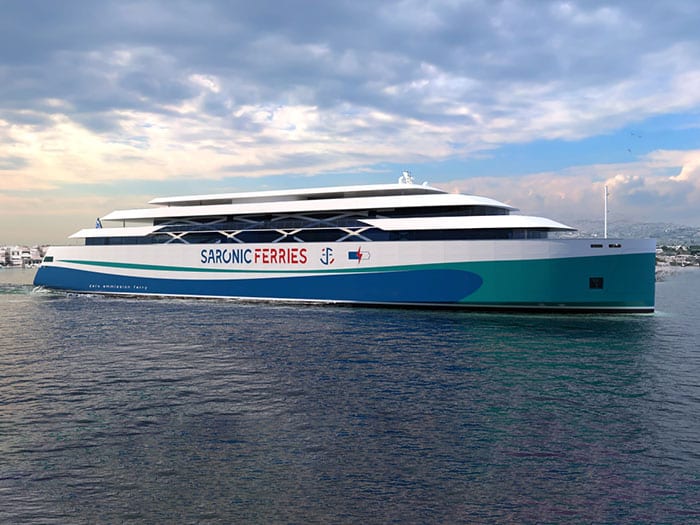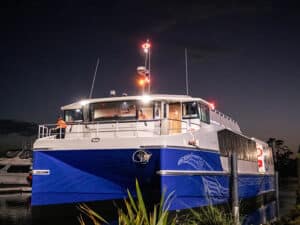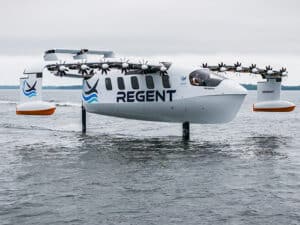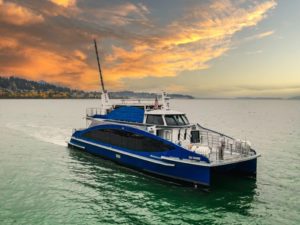
C-Job will design fully-electric RoPax for Saronic Ferries
Written by Nick Blenkey
The 85.2 meter long RO/RO Saronic Ferries vessel will carry 85 cars or 6 trucks + 55 cars and will have a service speed of 14.5 knots.
Netherlands-based C-Job Naval Architects is to develop the design for Greece’s first full-electric RoPax ferry. The 800-passenger vessel is being designed for Saronic Ferries, which, with a five-vessel fleet, is the largest ferry operator linking the Saronic Islands with Piraeus.
“We are taking a step towards a cleaner world and we envision our operation in the Saronic Islands to be the inspiration for others to initiate more green fleet renewal projects in Greece,” says George Papaioannides, a partner in Saronic Ferries.
C-Job delivered an initial design to Saronic Ferries following an extensive sustainable fuel feasibility study. The zero-emission ferry will have fully electric propulsion and will recharge in the port of Piraeus. The design will include state-of-the-art energy-saving solutions and top-in-its-class interior design. In addition to 800 passengers, the 85.2 meter long RO/RO vessel will carry 85 cars or 6 trucks, plus 55 cars and will have a service speed of 14.5 knots.
“We led the way encouraging potential stakeholders to embrace change and move things forward, both on the vessel design front and on the land-based infrastructure and supply. One can’t come without the other,” said Saronic Ferries partner, Joseph Lefakis. “C-Job, at its core, is a key player in sustainable ship design, worldwide. Sharing the same values with them, naturally led to this cooperation.”
C-Job opened a branch office in Athens in 2020 to be closer to its clients in Greece as it remains at the center of the global maritime industry.
“We’re proud to have been chosen as partner to Saronic Ferries to develop their zero-emission ferry and support their sustainable ambitions,” said Nikos Papapanagiotou, director of C-Job Athens. “We’ve been researching alternative fuels and energy sources for nearly a decade and have applied this knowledge and other innovations to our designs. Thanks to our experience and R&D team, we’re able to show how design choices will affect operations and create the optimal design for each situation.”
Provided the infrastructure required in the port of Piraeus is in place, the vessel is expected to join the fleet in 2026, sailing between Piraeus and the islands of Aegina and Agistri.




